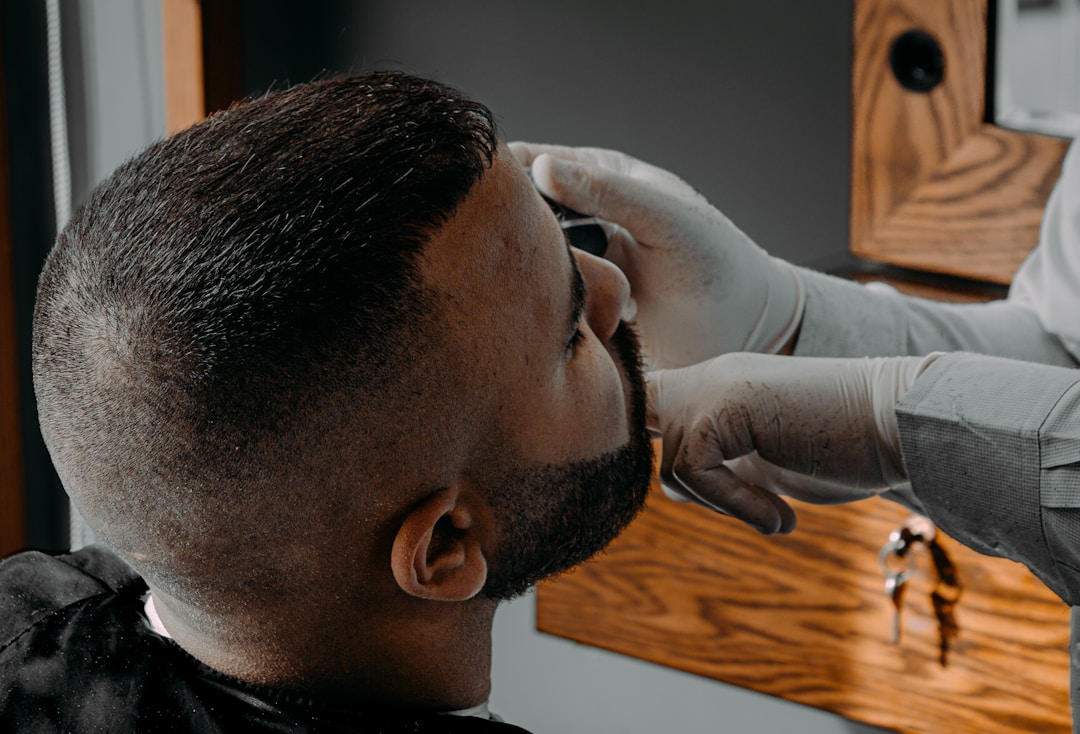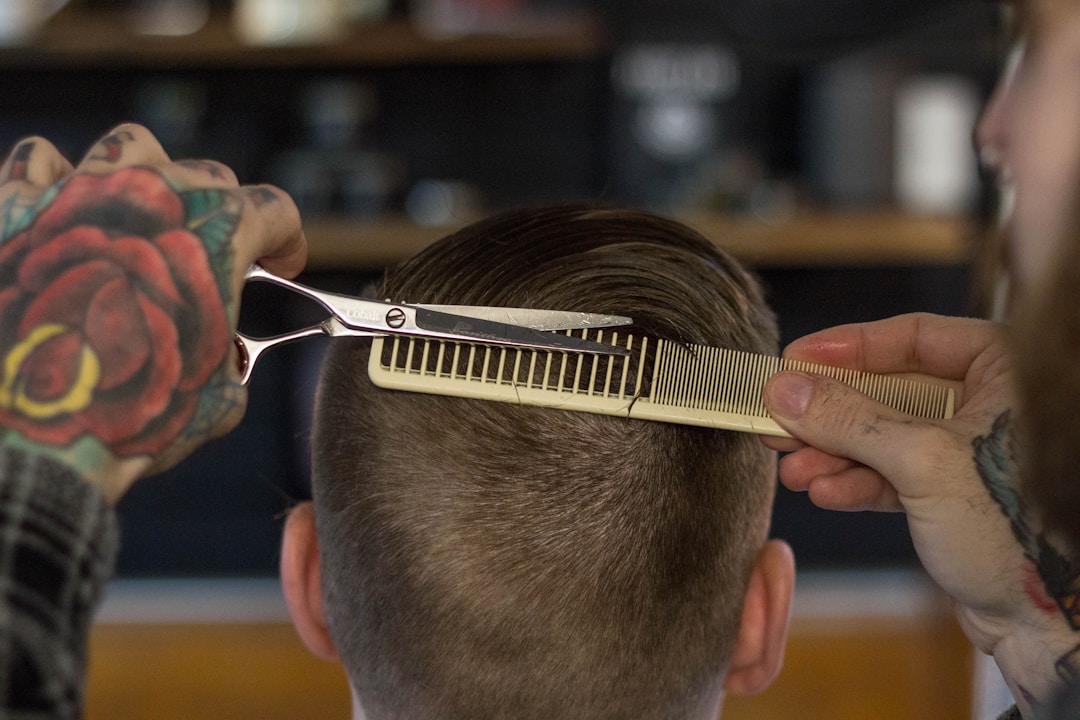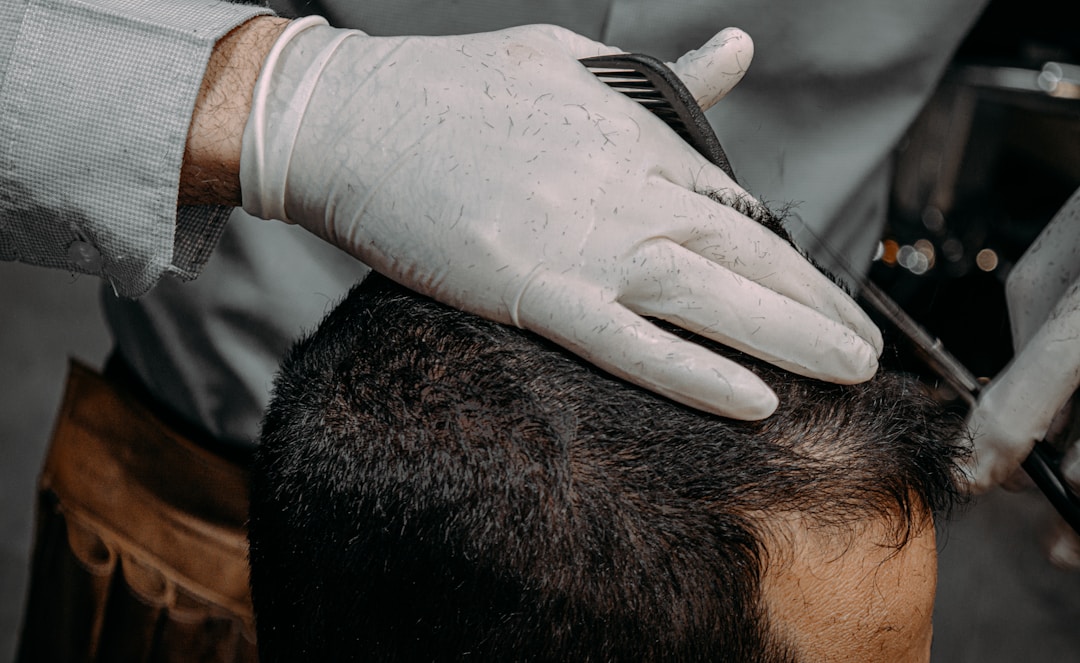Low Fade Haircut Professional Techniques: Master Methods
Master advanced low fade haircut techniques from DIDA NYC Hair Studio Queens. Professional cutting methods, expert blending techniques, and advanced barbering skills.

Professional low fade haircut techniques demonstrating advanced cutting methods and master-level experience at DIDA NYC Hair Studio
Advanced Low Fade Techniques: Professional Mastery in Queens
Professional low fade haircut techniques represent the culmination of traditional barbering craftsmanship combined with contemporary precision methods. At DIDA NYC Hair Studio in Rego Park, Queens, our master barbers have refined these sophisticated techniques through decades of dedicated practice, serving discerning clients throughout Queens including Forest Hills, Elmhurst, and surrounding neighborhoods who demand the highest standards of professional excellence.
The subtle artistry required for perfect low fade haircut techniques demands exceptional skill, patience, and understanding of graduated cutting principles. These advanced methods, which include precision skin fade techniques, separate master barbers from general practitioners, requiring years of training and practical experience to achieve the seamless results that define professional-quality low fade haircuts.
- • Master-Level Training: 20+ years perfecting advanced low fade techniques
- • Traditional Methods: Classical barbering techniques preserved and refined
- • Precision Tools: Professional-grade equipment for superior results
- • Individual Adaptation: Techniques customized for each client's unique features
- • Continuous Innovation: Evolving methods while maintaining quality standards
Foundation Techniques for Low Fade Excellence
Professional low fade haircut techniques begin with fundamental principles that govern successful execution. Understanding these foundational methods provides the basis for all advanced applications and ensures consistent, superior results across diverse client requirements.
Anatomical Assessment and Planning
Complete Client Analysis
- Head Shape Evaluation: Detailed assessment of skull contours and proportions
- Hair Growth Pattern Mapping: Understanding natural directional flow and cowlicks
- Density Distribution Analysis: Identifying thick and thin areas for optimal blending
- Texture Characteristics: Evaluating coarse, medium, and fine hair properties
- Facial Structure Integration: Coordinating fade placement with individual features
Strategic Planning Methods
- Reference Point Establishment: Creating consistent landmarks for measurement
- Transition Zone Mapping: Planning optimal blend areas and gradient lengths
- Proportional Balance: Ensuring harmony between fade and overall style
- Maintenance Consideration: Designing cuts that age gracefully over time
- Style Integration: Coordinating fade with top section styling requirements
Professional Clipper Techniques for Low Fades

Professional clipper techniques for low fades demonstrating expert tool manipulation and advanced blending methods for seamless transitions
Mastery of low fade haircut techniques requires exceptional clipper skills and understanding of how to manipulate professional tools for optimal results. These advanced methods enable the seamless blending and natural transitions that characterize superior low fade haircuts.
Advanced Clipper Manipulation
Guard Progression Systems
- Mathematical Sequencing: Calculated guard progression for smooth length transitions
- Lever Position Control: Precise adjustments for micro-length variations
- Overlapping Techniques: Strategic coverage patterns ensuring complete blending
- Directional Cutting: Working with and against hair growth for optimal results
- Pressure Modulation: Varying clipper pressure for different hair textures
Professional Blending Methods
- Extended Rocking Motion: Gentle clipper movements for gradual transitions
- Flicking Technique: Quick, light motions creating soft edge definition
- Cross-Pattern Blending: Multiple angle approaches for seamless integration
- Tension-Based Cutting: Using skin tension to optimize cutting angles
- Progressive Refinement: Multiple passes with decreasing guard lengths
Scissor-Over-Comb Excellence in Low Fades
Advanced low fade haircut techniques incorporate scissor-over-comb methods that provide unparalleled precision and natural results. These hand-finishing techniques, complemented by expert beard grooming services, represent the pinnacle of barbering artistry and require exceptional skill and years of practice to master.
Hand-Finishing Mastery
Scissor Control Techniques
- Tension Management: Controlling hair tension for accurate length cutting
- Angle Consistency: Maintaining proper cutting angles throughout the process
- Comb Positioning: Strategic placement for optimal hair control and guidance
- Blade Pressure: Appropriate scissor pressure for clean, precise cuts
- Movement Coordination: Synchronized hand movements for smooth execution
Integration Methods
- Clipper-to-Scissor Transition: Seamless connection between different techniques
- Natural Texture Creation: Adding movement and dimensional interest
- Custom Length Control: Achieving lengths beyond clipper capabilities
- Personalized Detailing: Individual adjustments for unique requirements
- Final Refinement: Perfecting transitions and eliminating any harsh lines
Low Fade Techniques for Different Hair Types

Low fade techniques for different hair types demonstrating textural adaptation methods and customized approaches for optimal results
Professional low fade haircut techniques must be adapted for various hair types and textures to achieve optimal results. Understanding how to modify standard methods for individual characteristics ensures consistent excellence across diverse client needs.
Textural Adaptation Methods
Straight Hair Precision
- Sharp Line Definition: Creating clean edges and precise transitions
- Contrast Enhancement: Maximizing length differences for visual impact
- Smooth Surface Achievement: Eliminating texture variations for sleek appearance
- Geometric Accuracy: Maintaining mathematical precision in cutting angles
- Edge Sharpening: Creating crisp perimeters around ears and neckline
Wavy Hair Integration
- Pattern Recognition: Working with natural wave formations for optimal blending
- Bulk Management: Reducing weight while preserving natural texture
- Movement Enhancement: Encouraging natural flow and dimensional interest
- Transition Softening: Creating gradual changes that complement wave patterns
- Volume Control: Managing thickness while maintaining desired shape
Curly Hair Mastery
- Curl Structure Preservation: Maintaining integrity of natural curl formation
- Specialized Cutting Angles: Adapted techniques for textured hair characteristics
- Length Variation Management: Accounting for curl spring and shrinkage factors
- Natural Blending: Working with curl patterns for seamless transitions
- Texture-Specific Tools: Using appropriate equipment for optimal results
Quality Control and Professional Standards
Professional low fade haircut techniques require rigorous quality control measures to ensure consistent excellence. These systematic approaches to assessment and refinement guarantee that every low fade meets the exacting standards expected from master-level barbering services.
Multi-Point Inspection Process
Technical Assessment Standards
- Transition Smoothness: Verifying seamless blend zones throughout the fade
- Symmetry Verification: Confirming perfect balance between left and right sides
- Length Consistency: Ensuring uniform cutting within matching areas
- Edge Definition: Checking clean, precise perimeter work
- Natural Appearance: Confirming results improve rather than distract
Professional Excellence Markers
- Seamless Integration: No visible lines or harsh transitions
- Proportional Harmony: Balanced relationship with facial features
- Technical Precision: Accurate execution of all cutting methods
- Artistic Refinement: Subtle sophistication in overall appearance
- Client Satisfaction: Results meeting or exceeding expectations
- • Perfect symmetry with mathematical precision between both sides
- • Seamless transitions with no visible demarcation lines
- • Natural appearance that enhances individual features
- • Clean, precise edge work around ears and neckline
- • Professional finish ready for immediate styling
- • Extended longevity with graceful growth progression
Advanced Problem-Solving Techniques
Master-level low fade haircut techniques include advanced problem-solving methods for challenging situations and unique client requirements. These sophisticated approaches enable professional barbers to achieve excellent results regardless of individual complications or styling challenges.
Corrective Technique Applications
Common Challenge Solutions
- Uneven Hair Growth: Compensating techniques for asymmetrical growth patterns
- Multiple Cowlicks: Working with difficult growth directions for natural results
- Density Variations: Balancing thick and thin areas for uniform appearance
- Previous Cut Issues: Correcting problems from inadequate prior services
- Unusual Head Shapes: Adapting techniques for non-standard skull contours
Customization Methods
- Individual Adaptation: Modifying standard techniques for unique requirements
- Professional Consultation: Understanding client-specific needs and preferences
- Progressive Development: Building optimal cuts through multiple appointments
- Style Evolution: Adapting cuts as client needs and preferences change
- Maintenance Optimization: Designing cuts for individual lifestyle requirements
Training and Skill Development
Mastering low fade haircut techniques requires dedicated training and continuous skill development. The path to professional excellence demands commitment to learning, practice, and refinement of both technical abilities and artistic vision.
Professional Development Pathway
Fundamental Skill Building
- Tool Mastery: Developing precise control over clippers and scissors
- Technique Practice: Repetitive execution to build muscle memory
- Quality Assessment: Learning to evaluate and improve work consistently
- Client Consultation: Developing communication and assessment skills
- Time Management: Balancing quality with efficient service delivery
Advanced Experience Development
- Artistic Vision: Cultivating eye for proportional harmony and aesthetic excellence
- Problem-Solving Skills: Developing solutions for challenging situations
- Innovation Integration: Adapting new techniques while maintaining quality
- Teaching Ability: Sharing knowledge and mentoring developing barbers
- Professional Leadership: Setting standards and inspiring excellence in others
The Future of Low Fade Techniques
Professional low fade haircut techniques continue evolving with new tools, methods, and approaches that improve traditional foundations. At DIDA NYC Hair Studio, we remain at the forefront of these developments while preserving the classical craftsmanship that ensures superior results.
Innovation and Tradition Balance
- Technical Enhancement: Incorporating beneficial tools and methods
- Quality Preservation: Maintaining fundamental standards of excellence
- Client-Focused Development: Prioritizing improvements that benefit client experience
- Professional Evolution: Adapting to changing industry standards and expectations
- Continuous Learning: Commitment to ongoing skill development and refinement
Low Fade Technique Comparison Guide
Understanding different low fade technique approaches helps you choose the optimal method for your hair type, lifestyle, and professional requirements. This comparison guide breaks down the various technical approaches.
| Technique Type | Best For | Skill Level Required | Execution Time |
|---|---|---|---|
| Clipper-Only Method | Straight hair, clean lines | Intermediate | 30-40 minutes |
| Scissor-Over-Comb | Custom lengths, natural texture | Advanced | 45-60 minutes |
| Hybrid Technique | All hair types, versatile | Master Level | 50-70 minutes |
| Textured Blending | Curly/coily hair | Master Level | 60-75 minutes |
Low Fade Maintenance Timeline
Proper maintenance ensures your low fade technique results remain sharp and professional between appointments. Follow this timeline for optimal appearance preservation.
Week 1-2: Peak Appearance
- • Sharp, crisp lines showcase master technique
- • Minimal styling required for professional look
- • Perfect time for important meetings and events
- • Daily maintenance: 5-minute styling routine
Week 3-4: Optimal Professional Period
- • Natural growth maintains sophisticated appearance
- • Blend remains seamless with proper technique
- • Increase styling product slightly if needed
- • Consider edge touch-up for special occasions
Week 5-6: Refresh Recommended
- • Still professional but approaching refresh time
- • Schedule your next appointment for continued excellence
- • Home maintenance: clean neckline and edges
- • Longer styling time to maintain shape
Essential Products for Low Fade Maintenance
Maintaining your low fade technique between professional services requires quality products specifically chosen for your hair type and styling preferences.
Medium Hold Pomade
Water-based formula with natural shine finish
Application: Small amount on damp hair, comb through for polished look
Lightweight Styling Cream
Provides flexible hold with moisturizing benefits
Application: Work through towel-dried hair before blow-drying
Matte Clay Product
Creates texture and definition with natural finish
Application: Apply to dry hair for maximum hold and texture
Sea Salt Spray
Adds volume and natural texture for relaxed styles
Application: Spray on damp hair, scrunch, and air dry or blow-dry
Curl Defining Cream
Enhances natural curl pattern while providing moisture
Application: Apply generously to wet hair, defining curls section by section
Leave-In Conditioner
Essential moisture retention for textured hair health
Application: Daily use on damp hair, focusing on fade transition areas
Frequently Asked Questions About Low Fade Techniques
Experience the pinnacle of low fade haircut techniques at DIDA NYC Hair Studio in Queens. Our master barbers combine decades of advanced training with cutting-edge methods to deliver low fade haircuts that represent the highest standards of professional barbering excellence. Discover why discerning clients throughout Queens including Rego Park, Forest Hills, and Elmhurst choose DIDA NYC for superior low fade techniques and exceptional results. View all our services.
Experience Master-Level Low Fade Techniques
Discover the difference that advanced professional techniques make. Book your expert low fade haircut at DIDA NYC Hair Studio and experience the superior results that come from master-level skill and dedication.